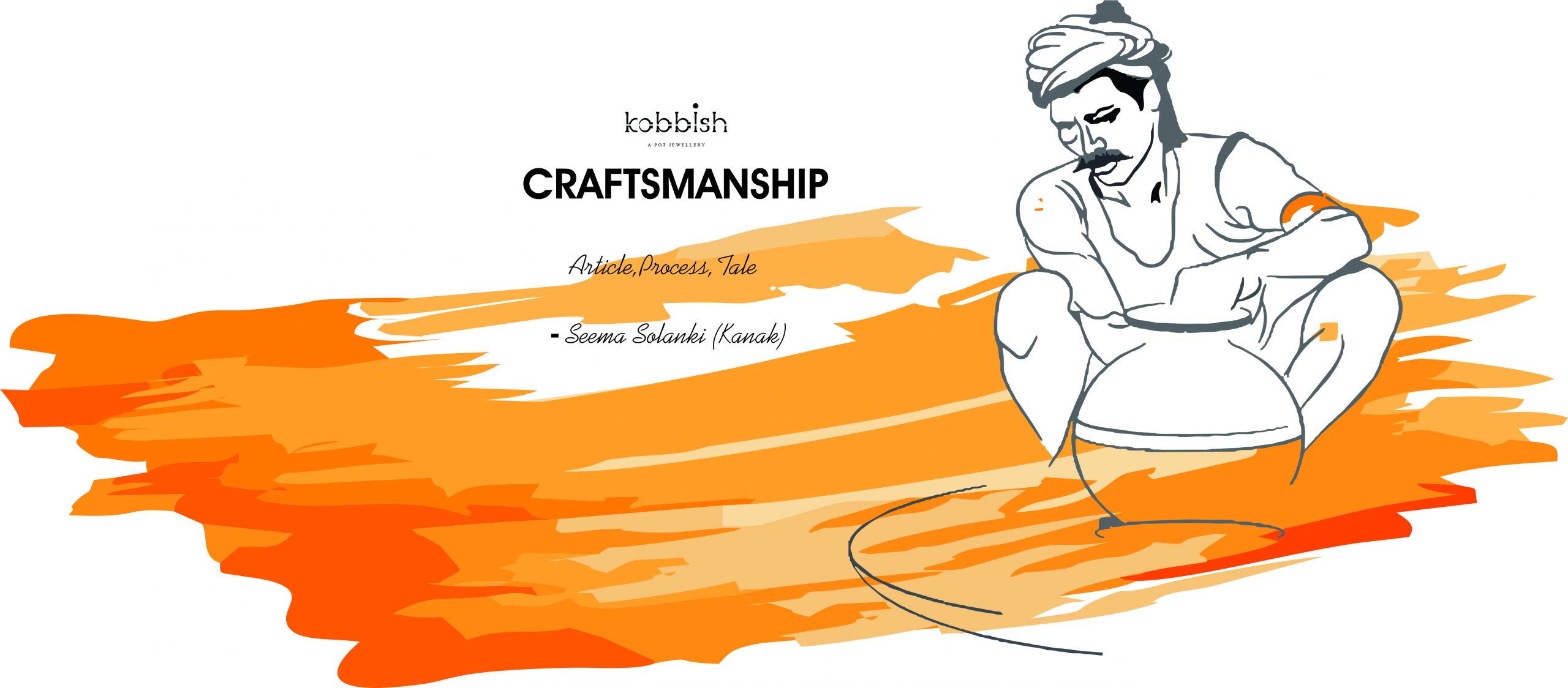Some of the teachings remain intact with us, all our lives; initially you would think how they are going to hold any relevance to our lives. But as time passes, you see them becoming life lessons and discipline that you follow. This Doha of Kabir that all of us read, in our high school, is still fresh and crisp in my mind. This reminds me of hard work, practice, persistence, passion, endurance which is always followed by triumph. Everything that Craftsmanship is made of. It takes every bit of these elements to achieve craftsmanship.
You try and try until you succeed and set a milestone. Craftsmanship is a routine, a discipline in a craftsman’s life that he follows to attain it. It is not something that can be achieved or happens overnight. It takes patience and endless efforts to create something with perfection and mastery.
I always had an inclination towards art and craft of India. Working for a tourism sector, I have had opportunities to experience such craftsmanship. During my encounters with the craftsmen at Jaipur from the various fields like block print, sculpture, and pottery etc. I gathered a lot of information on their origin history, generations and craftsmanship involved. It is so overwhelming to know how all these craftsmen are still connected to the roots of our culture and traditions.
Thinking about the craftsmanship it remained very ambiguous to understand the actual meaning of it. To my understanding so far, it was a skill or expertise of a person in a particular craft. As an inquisitive mind, I kept engaging myself in crafts that interested me. During my visit at my friend’s place one day, I came across a very unique kind of jewelry- A pot jewelry. Terracotta Pot that you can wear. This stunning set of necklace and earrings, was gifted to her by a friend, who owns this pot jewelry brand- Kabbish.

The craft of pottery is one of the oldest art forms in India. It traces its history back to the Vedic, Indus Valley Civilization and Mughal period. I was aware that pots are versatile; they are used as a container for water, in rituals, as a musical instrument, etc. Infact, in Hindu religion, they are considered very auspicious. They are used at all the stages of human life cycle. From birth to death, no rituals in Hindu culture can be completed without Kalash, or Pot. However, the piece of craft I was holding in my hand

was something unheard of. A pot that could be worn by anyone, irrespective of religion or occasion. This was a miniature form of the pottery we all have seen around us. So intricate and tastefully designed to create jewel pieces with it. It was a different and an extraordinary kind of craftsmanship I had ever witnessed. On enquiring further, my friend introduced me to Parul Agrawal- the creative mind behind Kabbish.
A young enthusiast and craft lover, who works closely with the rearers of the craft of Black Pottery in the district of Azamgarh, Uttar Pradesh. As we talked, she showed me the life of this craft, from the other side that usually goes unnoticed. The community of Kumhars, traditional potters, spends generations, practicing and making what they are making. There is a famous saying in Bhojpuri:
Each and every pot goes through a number of processes before its ready to be sold. At each step of this process, the entire family of the potter is involved. From the youngest to the oldest member of the family, men and women alike, everyone is engaged in the making. The art of pottery is time consuming and labour intensive job. The process begins with collecting clay from the ponds or rivers, followed by the cleaning of it. Small stones and coarse materials are separated from the clay for smoother work. Once cleaning is done the clay is beaten and soaked in water and dried to get proper consistency like a paste, suitable to work with, on the wheel. Such tasks are generally given to the younger lot in the family.
The clay block is then placed on the wheel, where its life begins to take a shape. The potter through both his hands, with such subtlety creates artifacts of the desired shape. As the hands of the craftsman move, to mould that humble clay on the rotating wheel, it almost feels like, life is being infused in the dead clay. Once the pots are made they are dried in sun and shade for decent time, before the finishing starts.

Women of the family also have a very significant contribution in making of pots. They are responsible for flawless surface and lustre of the pots. Women do the final finishing with mustard oil and clay slip made of mango tree bark, bamboo leaves, amongst other ingredients. Finishing is followed by firing in closed kiln, with ashes and cow dung cakes. The smoke that is formed inside the Kiln is what gives that jet black color to the pots. This is craftsmanship close to magic!

The creation of such beautiful craft, is not a god gifted talent or a skill that comes as a heredity. It’s the devotion of the craftsman, towards his tradition, to create. It takes numberless trials and intensive level of attention and dedication to get success in creating a perfect piece of black pottery.As beautiful and simple as it may seem, each pot is a result of hidden struggles of these potter’s life, that goes unseen. The journey of the potter to take the clay to the market is not a cake walk. Finding suitable clay is also an arduous task. Sometimes potters have to pay high prices to procure raw material.
Mostly the traditional Kumhars come from the remote villages of India, away from the basic necessities of day to day life. Continuing the family profession against making the ends meet is at times a plight to endure. Unavailability of proper means of transport is also a drawback for most of the artisans based in rural areas. The market becomes restricted, resulting in limited outreach and scope to expand.

Craftsmanship is not easily earned. In today’s world, everything can be made available at click of a button, or can be replicated using machinery. We need to realize, things that are hand crafted and involves time are invaluable. Craftsmanship ought to be valued for the patience, passion and persistency of the craftsman than the product.
With changing trends, there is always a need to add and innovate. Our Indian artisans from rural areas are dependent on traditional techniques and methods. They are not exposed to the idea and knowledge of innovating. The major cause of the downfall, of most of the traditional crafts is the lack of experiments and up gradation. It’s always challenging to get these artisans to experiment on new designs. Association of brands such as KABBISH with these artisans has opened new horizons for them. Kabbish aspires to carry the story of black pottery and its craftsmanship, through its jewelry.
Kabbish is a story of craftsmanship to the core.

Seema Solanki (Kanak) comes from a tourism background. She is an Art and Culture enthusiast and holds working experience in most of the sectors in Tourism, and is currently working as a Manager at the Palace Atelier, The City Palace of Jaipur.




